
From the President
Welcome to Sheridan’s annual HOME AND GARDEN SHOW!
The Big Horn Home Builders Association is pleased to be in our fifth decade of hosting this event. In the early days, the show was located in other locations such as the fairgrounds, airport and high school gymnasium. The community came to know it as the “Home Show” until 2012 when the name was expanded to the “Home and Garden Show”. The venue has long since been held at the Ramada Plaza, formerly known as Sheridan Holiday Inn Convention Center, as it is the largest indoor facility in our area that is available for such a gathering of vendors. Each year we sell out all of the booth spaces available. This year is once again a full house with approximately sixty six vendors registered and ready to help with the improvement of your home and property. We will also have a “Builder Wall” displaying posters of reputable building contractors from the Big Horn Home Builders Association membership. The April date helps with better weather for the show, as historically the event has been held in the month of March. Each year the community supports our efforts with attendance estimated at approximately 3,000 persons browsing the many home improvement displays. In addition to all of the business vendors, attendees will enjoy food trucks on location, a chance to win a raffle of locally handcrafted patio furniture, and a grand prize giveaway. The Grand Prize to be given away this year is a $1,000 Gift Certificate to Landon’s Greenhouse, provided in part by Landon’s Greenhouse. The raffle this year will be for an Adirondack Patio Furniture set custom crafted by the Sheridan College Construction Technology Students, and Construction Apprentices, with materials generously donated by Knecht Home Center. Thank you to all who have made this exhibit a success for over forty years.
The Big Horn Home Builders Association, or BHHBA, founded in 1978, is a local membership of individuals and businesses associated in some way with the building trades and industry. Each member of the BHHBA is also a member of the National Association of Home Builders, or NAHB. NAHB was founded in 1942, and is the largest trade association in the United States. As a part of the NAHB, we are 140,000 members strong. The five pillars of NAHB membership are advocacy, expertise, knowledge, networking and savings.
ADVOCACY: NAHB fights for our members on Capitol Hill, in your state and in the communities where you do business.
EXPERTISE: In-depth economic analyses of the home building industry to help you gain insight into the issues and trends driving the industry.
KNOWLEDGE: NAHB’s educational programs and professional designations provide opportunities to improve your skills and advance your career.
NETWORKING: Discover opportunities to build relationships with fellow professionals, future customers and suppliers.
SAVINGS: Members receive exclusive discounts and private offers on a wide range of products and services offered by many top companies.
The NAHB sponsors the International Builder Show in January every year. The National Association of Home Builders work hard for our industry. One example of the effort is advocating with the federal government to keep mortgage interest rates stay low. Another example is advocating for tax credits for home improvements, energy improvements, and low income families. The Big Horn Home Builders Association invites you to join the organization. If interested, please visit our website at www.bhhba.org for contact information.
Jon Seidel President, Big Horn Home Builders AssociationWhy it pays to hire contractors for home renovations
A sense of pride comes from a successful do-it-yourself home improvement project. However, quite often inexperience and time constraints lead homeowners to turn to professional contractors to make sure jobs get done correctly and on time.
Allied Market Research reported in 2021 that the home improvement services market is predicted to reach $585.3 billion by 2030. The following are some reasons why renovation-minded homeowners benefit from the services of professionals.

• Tasks can be overwhelming: A home remodel is a large undertaking with many different steps. Contractors who have been around the block a time or two understand how to organize and manage time to get the job done. Plus, they’re devoting all of their attention and time toward the remodel when on the job. This differs from when a do-it-yourselfer tries to work on a remodel in between other responsibilities.
• Network of suppliers: A good general contractor will have a list of material suppliers he or she routinely uses. Often contractors become preferred sellers, which means they get a lower wholesale rate, and will often pass those savings on to the customer.

• Licensed and bonded protection: Licensed and bonded contractors not only have the skills for the job, they have insurance protection behind them. Therefore, if an injury occurs or the job goes awry, the homeowner will be protected from liability. A license means the contractor will have to uphold licensing standards, which could mean staying current on trade practices and skills.
• Expertise: Experienced contractors have done the work they have been hired to do many times, which means their skills are fine-tuned. Knowing the correct way to do a job results in fewer errors (and thus

fewer repairs), shorter time periods to get the work done, and potentially lower costs overall.
• Frees up time: Homeowners who hire out for remodels can utilize their time in other ways, such as on the job or spending time with family.
• Reduces stress: Putting the work in capable hands means homeowners do not have to educate themselves about how to do the task, purchase tools, prevent injuries, and/or deal with potentially negative outcomes. Certainly having extra people in the house can be challenging, but it may not equal the stress caused by tackling a job on one’s own.
There are many advantages to hiring contractors to renovate a home instead of taking the DIY route.
Popular kitchen flooring materials

Kitchens have long been considered the most popular gathering space in a home. That popularity compels millions of homeowners to renovate their kitchens each year, and the return on those investments is often significant.
A number of variables, including the value of neighboring homes and how quickly homeowners sell their homes after a renovation, affect the return on investment with a given project. According to Remodeling magazine’s “2021 Cost vs. Value Report,” homeowners recouped roughly 72 percent of their investment in a minor kitchen remodel at resale. That’s a sizable return that outperformed other popular upgrades, including vinyl siding replacement and wood deck additions. When renovating kitchens, homeowners will have to consider various components within the room, including the floors. Average flooring costs can be hard to calculate because they depend so heavily on homeowners’ choice of materials. The following are some popular flooring materials that homeowners can consider as they plan to renovate their kitchens.

• Vinyl: Vinyl flooring is popular thanks in large part to its cost. According to the home remodeling experts at HomeAdvisor, vinyl flooring installation is much less costly than other types of flooring. But its budget-friendliness is not the only benefit of vinyl flooring, which HGTV notes is easy to clean, making it an ideal choice for families that routinely confront spills and stains. HomeAdvisor notes that vinyl is the best waterproof material among all kitchen floors.
• Porcelain/ceramic tile: HomeAdvisor reports that the average cost to install porcelain or ceramic tile flooring is between $885 and $2,994. That’s less than the average cost to install stone or wood flooring. Porcelain or ceramic tiles can be slippery when they get wet, though. HGTV notes that some porcelain flooring tiles have been certified as slip-resistant by the Americans with Disabilities Act.
• Hardwood: It’s hard to beat hardwood when it comes to aesthetic appeal. Hardwood can be especially suitable in homes with open-concept floor plans that already have hardwood floors in surrounding rooms. HomeAdvisor notes that hardwood flooring installation can be costly, which might make it a less realistic option for budget-conscious homeowners. According to HGTV, engineered wood planks may be something to consider in the kitchen, as these are designed to be less susceptible to humidity and temperature. That’s an important component to consider in the kitchen, where temperatures can fluctuate while meals are being prepared.
• Stone: Natural stone tile is another popular kitchen flooring material. HomeAdvisor traces that popularity to its wide variety of styles and price points, which make it a realistic option for homeowners working with budgets big and small. Stone tiles also provide a unique look because no two look the same, which might appeal to homeowners who want their kitchen floors to create a one-of-a-kind impression. Kitchen flooring materials vary widely. That variety ensures there’s a material for any style and budget homeowners are working with.
Options abound when shopping for home siding
Home improvement projects run the gamut from minor repairs to complete overhauls. Replacing exterior siding is one of the most significant home improvement projects homeowners can undertake. Such a project can give homes a completely new look, which is why choice of siding is such an important decision.
Homeowners have many siding options to choose from, and the following guide can help them make the best choice for their homes.
Vinyl siding
Vinyl siding is easily maintained and among the more budget-friendly siding options. According to the home
improvement resource HomeAdvisor, vinyl siding is made from a PVC plastic that does not rot or flake. Siding professionals note that the technology used to create vinyl siding has changed considerably in recent years, making this option more diverse than traditional vinyl siding. So homeowners turned off by the potentially plastic look of vinyl siding might be surprised at how different modern vinyl siding looks compared to the vinyl siding of yesteryear.
Fiber-cement siding
The home improvement television network HGTV notes that fiber-cement siding has grown in popularity among homeowners in recent years. This
material does not require much maintenance and it’s non-flammable and resistant to termites. HomeAdvisor notes that fiber-cement siding can create the look of wood, stucco or masonry, making it a versatile option capable of creating various looks. In addition, fiber-cement siding is known for its durability, with some products coming with warranties lasting as long as 50 years.
Wood siding
Homeowners have many choices if they prefer wood siding on their homes. Cedar, cypress, fir, pine, and spruce are just a handful of the many wood siding options homeowners can choose from. HomeAdvisor notes that cedar shingle siding offers a natural look that blends well in wooded and waterfront landscapes. Wood clapboard siding is another popular option, though it tends to require more maintenance than cedar shingle siding. Homeowners who want wood siding should discuss their options with an experienced siding professional, as many factors, including the choice of wood, must be considered before making a final decision.
Stone and stone-veneer siding
Many homeowners fall in love with the natural appeal of stone, but the price tag, which tends to be costly, may not be as awe-inspiring. HGTV notes that stone can be difficult to add to an existing home and doing so may drive the price up even further. Stone siding is durable, and there are many options, including solid stone and natural stone cladding, that make this an option capable of providing an array of looks. Stone-veneer siding is less expensive than natural stone and also comes in an array of styles. As is the case with wood, stone siding options are so extensive that homeowners are urged to discuss each one with a siding professional before making their decisions. These are just a handful of the many siding options homeowners can choose from. Siding can give homes a competely new look, making choice of siding a significant decision worthy of careful consideration.
Is your kitchen a ‘Before’? or an ‘After’? Let Floor To Ceiling transform your kitchen, bathroom, or any room in your home, into the ‘After’ of your dreams. We offer quality products, interior design services, free estimates, special financing, professional installation and more!
For 20 years, Sheridan Floor to Ceiling has built its reputation on the back of high-quality services. But it’s not just quality that has made us successful—it’s our ability to customize our services to fit our customers’ exact needs that continues to drive our company forward.

7 things to know before replacing windows
The decision to replace windows often comes down to aesthetics and necessity. Drafty windows can reduce energy efficiency in a home, requiring HVAC systems to work harder to keep interiors comfortable. The harder the HVAC must work, the more homeowners will

pay in energy costs.
Old windows also may be points of entry for water and insects. Despite the importance of windows, Money magazine advises that new windows make up only a fraction of the home’s total exterior “envelope,” resulting in only about 5 to 15 percent of total energy savings. But there are still plenty of reasons to invest in new windows.
1. Vinyl or aluminum may be best. Lumber is farmed rather quickly today and solid wood products may not stand up to elements as well as wood used a half-century ago. To avoid rot, vinyl windows often are an affordable and durable choice. Homeowners also have the option of wood windows with aluminum cladding, which are long-lasting.
2. Moisture problems indicate windows need to be replaced. Condensation that shows up as fogging between double-pane windows or on the inside of windows indicates that the windows are starting to fail. If installing a vapor barrier in the basement or crawl space, ventilating properly when showering or cooking, or using a dehumidifier indoors does not remedy the situation, it might be time to replace windows.
3. Windows add curb appeal. Beyond functionality, replacement windows immediately update the look of the home and can improve curb appeal since they are one of the most prominent features on the exterior of a home. If a house needs an update, replacing windows and can be a quick and affordable update.
4. Consider other energy-efficient upgrades. Sometimes older windows can be salvaged, especially if they are not damaged and only moderately drafty. Replacing panes, sash cords, weather stripping, and even glazing may be less expensive than replacing a window. Plus, older homes with attractive windows complement one another. To keep energy bills down, think about adding insulation to the attic and basement — which is a good idea even if you are replacing windows.
5. The wrong windows can adversely affect home value. The National Association of Realtors says homeowners get about 73 percent of their replacement window investment back when they resell a home. But choosing the wrong windows might lower the value of the home. It’s important to match the look of the original windows, including window material and the divided light pattern (the number of panes in each window) with the original windows.

6. Think about soundproofing, too. When upgrading windows, also think about how certain windows can cancel out noises and make homes more soundproof. Some windows can help reduce outdoor distractions like leaf blowers or lawn mowers.
7. Proper installation is key to longevity. Replacement windows are only as good as their installation in many cases. Poor installation and orders of standard, rather than custom sized windows could result in poor fitting and seals. Homeowners should carefully vet and review window replacement contractors to find the best professionals for the job.
5 factors to consider when buying a home
2: Job security/availability
The financial resource Fortune Builder says to consider your job security before taking the home ownership plunge. Before committing to an investment as substantial as a home, ensure that you are secure in your job. Similarly, if you are relocating for job prospects, verify that the new location has a thriving job market.
3: Local schools
Home ownership is a dream for many people. In fact, buying a home is considered by many people to be a major life accomplishment. Various factors determine what makes a home an attractive place to live. While some considerations may overlap, others may be unique to individual buyers. Those new to the real estate arena may want to consider the following factors as they search for a new place to call home.
1: Property taxes
Property taxes can greatly affect the overall cost of living in a particular home. The real estate company RedFin says property taxes are generally levied by each county and often include taxes paid to schools, utility companies and municipal governments. Property taxes will usually be factored into a monthly mortgage payment, and how high (or low) taxes are can turn an affordable mortgage payment into something that can break a budget. When calculating payments, be sure to include property taxes in your estimates.
For potential homeowners with children or those planning on becoming parents, area schools should merit significant consideration. Research school rankings and reviews, but know that rankings can change. American Family Insurance Company says to also look at the school budget history of towns you’re considering to see if residents prioritize funding for education. This can be a measure of how important education is in a given community.
4: Commute times
Home ownership involves both lifestyle and financial decisions. Calculate the time it will take to travel to and from work when considering a certain town or neighborhood. Find out if there is mass transit and what options are available for off-hour travel needs.
5: Lifestyle options
Quality nightlife, arts and history, community events, proximity to cultural centers or cities, and other factors are at play in choosing a home. Make sure your new community allows you to still enjoy the things you’re passionate about.

Buying a home involves considering various factors that can affect your budget and quality of life.
Greenhouses effectively extend growing seasons
Modern, large-scale agriculture operations utilize various machines and technologies to provide products to consumers. Greenhouses are among the resources used to help plants thrive.

Greenhouses are not a new phenomenon, even if today’s incarnations have technological upgrades over their ancestors. The first attempts to grow plants in greenhouse-like structures likely date back to ancient Egypt, but there are writings from the Romans as early as 14 BCE explaining greenhouse operations. The Roman emperor Tiberius wanted to eat cucumbers all year long. Roman winters would not allow for cucumbers to thrive when temperatures dropped below freezing. Rolling cucumber growing carts into sheds only did so much. Someone came up with the concept of making sheds with sheets of elenite, a transparent rock, to let the sun in and help keep cucumbers growing indoors warm. The idea took off from there.
Greenhouses are comprised of walls and roofing materials primarily made of a transparent material. The interior of a greenhouse exposed to sunlight becomes significantly warmer than the external temperature, helping to protect plants inside from extreme conditions and enabling plants to thrive even when weather conditions are not optimal. Through the years, greenhouses also may have incorporated some form of additional heating. Keeping plants thriving for commercial production now gets additional help from computers, as relying on sunlight alone may result in fluctuations in optimal conditions. Modern, smart greenhouses, according to the cultivation technology company Growlink, employ smart technology for heating, cooling and lighting. This tech is connected to a computer to optimize plant growth conditions. Computers can adjust conditions accordingly for the particular plant being produced, such as for tropical fruits that require more moisture and heat.
Anyone who desires a greenhouse for personal plant growth can build one in his or her backyard with various plans available for free or purchase. Companies also sell prefabricated greenhouse kits that can be erected with relative ease.

Handy homeowners also can construct basic greenhouses with materials found at many home improvement retailers. A wood frame greenhouse can be built in any size and covered with plastic sheeting. One can purchase a prefabricated greenhouse door or simply use a sheet of weighted plastic that can be tied out of the way for the door. To allow for ventilation in hot weather, a wood-frame vent that can be propped open can be incorporated into the roof rafter design.
Those who want a more permanent structure may want to look into using greenhouse plastic paneling in lieu of plastic sheeting. Either way, home greenhouses can be as elaborate or as simple as individuals desire. Greenhouses are effective ways to extend growing seasons for both commercial and home gardeners.
5 signs it’s time to renovate
Homeowners renovate their homes for a variety of reasons. Renovations can increase the value of a property and make homes safer and more comfortable for their occupants. Improvements also can be made to stay current with the times or to give a home a new vibe. Statista projects $510 billion will be spent on home improvements in 2024. The home improvement market is generating significant revenue. In fact, nearly a quarter of Americans opting to renovate their homes will spend an average of $10,000 on their projects. According to a Home Stars Renovation report, 8 percent of Canadian homeowners who have renovated have spent more than $20,000 on a home improvement project.
Kitchens and bathrooms often get the most attention when it comes to home improvement. However, every room and space in a home may need a renovation at some point, and the following are five signs it’s time to renovate.

1. Age
The National Association of Home Builders states that 50 percent of U.S. homes are over the age of 40. That means that age alone could dictate a need to renovate, particularly if some materials are original to the home. For example, asphalt roofs typically last 25 to 30 years, while window frames can last 20 to 50 years depending on how well they have been maintained.


2. Inconvenient layout
Some homeowners scratch their heads when faced with awkward floor plan layouts. While one may live with the inconvenience for some time, typically a floor plan that isn’t working for the homeowner is a major driver of renovations.
3. Outdated looks
A home can look dated even if it is a relatively recent build. That’s because trends change quickly. For example, dark, cherry cabinets that were popular just a little while ago have now been replaced by lighter color palettes. Homeowners whose homes do not match the looks emulated in design magazines may consider a change, particularly if they’re planning to sell soon.
4. Deterioration
Signs of water, storm or structural damage should be addressed as soon as possible. Any deterioration should be a strong indicator that it’s time to renovate.
5. Efficiency
Escalating utility bills could be indicative of an inefficient home. Homeowners can conduct energy audits and then improve the areas where energy loss may be occurring, such as windows, doors, siding, and insulation.
Homeowners can renovate their homes when they see fit, but various signs may warn that it’s time consider updating or remodeling a home.
Looking to buy or sell, give us a call today!





How to keep outdoor living areas safe
Outdoor living spaces are a wildly popular trend. A 2021 survey conducted on behalf of the International Casual Furnishings Association and American Home Furnishings Alliance found that 90 percent of individuals surveyed felt outdoor living spaces are more valuable than ever. That popularity was evident during the pandemic, during which 23 percent of respondents indicated they bought new furniture, while 18 percent acknowledged building a deck. The excitement of seeing a new or renovated outdoor living area can make it easy to overlook safety. But outdoor living areas, particularly those that include entertaining areas with televisions, lighting and other electronics, can pose significant safety hazards if homeowners don’t take
some necessary precautions.
• Use an appropriate extension cord. String lights above outdoor living spaces like decks and patios can create a warm, relaxing nighttime vibe. Those lights need to be plugged in, which increases the risk for electrical accidents. When utilizing an extension cord outdoors, never use a cord designated for indoor use. Outdoor extension cords are better insulated than cords made for indoor use. That insulation provides better protection against the elements, including sunlight, changes in temperature and moisture. When using an extension cord outdoors, make sure the cord is secured and not left lying on a deck or patio where it can easily become a tripping hazard.
• Consider fencing. Fencing can make an outdoor living space more private and
safe. Local laws may mandate that pools be enclosed with fencing, but even living spaces without pools can be made safer with the installation of a fence. Firepits are wildly popular, as more than 35 percent of homeowners who responded to the ICFA survey acknowledged their intention to purchase new firepits in 2021. Adding fencing around areas with firepits establishes boundaries, which is a must for homeowners with small children. Fencing also makes it harder for local wildlife to gain access to a property, which can decrease residents’ risk for tick-borne diseases like Lyme disease.
• Purchase an outdoor television. Outdoor televisions can be expensive, but the cost of such devices will depend on what homeowners are looking for. Homeowners who plan to spend ample time outdoors watching games, movies and their favorite shows may feel a high-end outdoor television, which can cost anywhere from $10,000 to $20,000, is well worth the investment. But those working with smaller budgets can find a quality 4K outdoor TV for around $2,000. That’s still a steep price tag, but the electronics experts at P.C. Richard & Son note that outdoor TVs are designed with safety features that indoor televisions don’t have. For example, outdoor TVs can self-regulate temperature and moisture levels, greatly reducing the risk of electrical issues.
Outdoor living spaces are wildly popular. Homeowners are urged to prioritize safety when designing and enjoying outdoor entertaining areas at their homes.

How to bring beneficial bees back
Bees, birds and butterflies play integral roles in pollinating many of the crops humans rely on for sustenance. The National Pollinator Garden Network, through the National Wildlife Federation, recently launched the Million Pollinator Garden Challenge, an effort to increase the amount of nectar and pollen food sources. The organization aims to reverse the alarming decline of pollinators such as honey bees, native bees and monarch butterflies.
Many people are afraid of bees because of their propensity to sting. Unlike their wasp and yellow-jacket cousins, honeybees and bumblebees are much more docile and content to hop from bloom to bloom without paying humans any mind. The only time such bees may resort to stinging is if someone inadvertently steps on them.
Bees are beneficial for yards. Gardener’s Supply Company says one out of every three bites of food humans take depends on a pollinator. That’s because about 150 crops grown in the United States depend on pollinators. Even though there are 4,000 species of native or wild bees in the continental United States, many populations are in decline. According to the Pollinator Partnership, various areas of North America have lost more than 50 percent of their managed honeybee colonies in the past 10 years.
Bringing these important pollinators back will take a little work, but it is possible.
• Plants that offer cover can be attractive to bees that desire a respite from the sun and heat. Coleus and other ground cover offerings can be handy.
• Offer water in shallow dishes, as even bees need a cool drink to stay hydrated.
• Bees like various plants, so plant more than one species. Some plants that bees tend to like include alyssum, aster, geranium, bee balm, poppies, and clover.
• When planting, include some native species.
• Brush piles, dry grasses and dead woods offer nesting areas for bees.
• The Gardener’s Supply Company also says that bees find blue, purple and yellow flowers most appealing. Opt for more of these hues when planning gardens.
• Above all, avoid using pesticides in the yard. Even organic ones can be toxic to bees and other pollinators, and they may contribute to colony collapse disorder. With these techniques in mind, homeowners can attract more bees to their yards and gardens, which can benefit bees and humans alike.
Time to replace old wiring?
Old homes can be charming and contain architectural elements not often seen in many modern housing developments. But what older homes may have in design appeal, they may lack in updated features. While cosmetic changes are not necessarily difficult, one area of concern in historic homes — and sometimes even in houses built 40 or 50 years ago — is archaic wiring. Wiring provides power to every room
of the home. In today’s electronics-driven society, electricity is an essential component of daily life. Over time, wiring can be compromised through simple aging, pest infiltration, weather, or other conditions. Deteriorated wiring can present a shock hazard and also a serious fire hazard, warn the home renovation experts at The Spruce. Furthermore, the home improvement site This Old House advises that the amperage of old wiring may not be able to meet the needs of the devices used in homes — overpowering the circuits. This can cause breaker blowouts and other problems, such as overheated wires that may spark and cause fires from within the wall.
Wiring often falls into the “out of sight, out of mind” category. Homeowners may make allowances for inadequate electrical systems, such as running extension cords or using multiplug connectors to increase their wiring capacity. However, they may not be diligently keeping on top of upgrades needed to stay safe. Confirming that a home’s electrical system is safe is a necessary part of home maintenance.
For those who haven’t already done so, schedule an inspection with a licensed electrician to go over the home’s wiring. He or she can determine if any areas pose a safety risk and/or do not conform to local code requirements and the National Electrical Code. Failure to meet code can lead to difficulty obtaining permits to make other home renovations, or difficulty selling a home later on.


The electrician can also go over improvements that can improve safety and function. Additional outlets, including GFCI outlets in kitchens and bathrooms, may be part of the plan, as well as rewiring a fuse box or circuit panel to allow for better flow of power around the house. Frayed wiring or underinsulated wiring also may need to be replaced.
Owners of old homes should recognize possible electrical system dangers that require attention. Plus, considering electrical codes change quite frequently, it is always in a homeowner’s best interest to work with a qualified electrician to keep wiring inspected and up to date.
If it has anything to do with electricity, anything at all, Jackson Electric does it!

TORNADO
INSULATED CONCRETE FORMS
FOR THE SAME PRICE AS BUILDING WITH STICKS!
Top 5 hottest home building trends
These days, home trends are about more than good design and aesthetics — they’re about creating spaces that reflect our values and are more comfortable and enjoyable to live in. From net-zero and net-positive construction to tiny minimalist homes, trends are all about your family’s
hours.
Outdoor living: Many of us are now choosing to forgo getting a cottage or summer home and recreate the experience in our own backyards. This trend helps you make the most of your existing space and take full advantage of your yard or patio during the summer months.
You can design a full living space outside, complete with an outdoor television and comfy couches, as well as a kitchen and refrigerator for entertaining. Consider adding a fireplace or firepit to keep warm during cool summer nights and enjoy the outdoors through spring, fall and even winter if you’re brave.
lifestyle.
Whether you’re shopping for a new home, renovating your own or creating a new build from scratch, here are some of the biggest trends you need to know for inspiration.
Sustainable design: This one has been popular for a long time, but green design has evolved to be about much more than energy-efficient appliances and LED light bulbs. Now, it’s all about making sure everything in your home reduces your carbon footprint and minimizes any impact on the environment. To try the trend yourself, think big and get creative – install solar panels on your roof, choose building materials that don’t require deforestation and upcycle old furniture for decorative elements instead of buying new Disaster resiliency: Climate change affects us in so many negative ways, and one of the top concerns is the increase in natural disasters. From wildfires that last for months to major floods that affect entire cities, we now need to prepare for the worst when building our homes.
Switching to disaster-resilient materials is an important first step. Many builders now prefer to use stronger, more energy-efficient materials like insulated concrete forms (ICFs) instead of more traditional materials like wood. For example, Nudura ICFs can withstand winds of up to 250 miles per hour (equivalent to an F4 tornado) and offer a fire protection rating of up to four
Home automation: This is another longstanding trend that shows no signs of slowing down. It has also evolved to encompass more of the home to make life even more comfortable and convenient. From an oven that can be turned on remotely to preheat, to skylights that can open and close automatically to create the perfect ambient temperature, there are more ways than ever to integrate smart home technology into your living space.
You can start small with voice assistant and smart light bulbs and work your way up to a total smart home system that includes home security, temperature controls and all your electronic devices.
Customization: You don’t have to settle for what mass manufacturers decide to build or what works for everyone else. Creating a home that’s as unique as you are is the latest trend, with custom-built storage and personalized architectural features to make your space stand out.
You can even go as far as building a custom home that’s suited to your family. Older home demolitions and purchasing land-only properties is becoming more common, allowing you to work with an architect to create exactly what you want with a new build.
Find more information about the benefits of building a home with ICFs at nudura.com.



The many styles of front doors
A grand entryway simply wouldn’t be complete without an impressive front door. A front door can dazzle guests and create a homeowner’s desired vibe before anyone even steps inside, which only underscores how important the choice of door style can be. When shopping around for a new front door for their homes, homeowners can consider the many popular styles as they seek to choose one that fits an existing scheme or use a new front door as a spring-
board to a redesigned home interior.
• Farmhouse: Farmhouse doors are not all one and the same. Traditional farmhouse doors provide a rustic look that’s become popular in home decor over the last decade or so. Modern farmhouse doors are a little less rustic because they incorporate more contemporary elements into their design. Each option is ideal for homeowners who aspire to create a farmhouse vibe in their home interiors and exteriors.
• Modern: Modern front doors tend to boast a bold look and many are made up of large glass panels. Some homeowners prefer modern front doors because the glass in them allows lots of natural light into their home’s interior. The added light in the entryway appeals to homeowners who want to brighten up these spaces, which tend to be dark in homes with more traditional doors.
• Traditional: Traditional front doors may be the most recognizable to today’s homeowners. Often solid wood but sometimes enhanced with glass, traditional doors may feature subtle, yet ornate designs. Traditional front doors might feel out of place in modern or rustic homes, so they’re generally best suited to homes with owners that prefer more traditional decor inside their homes.
• Custom: It’s important that homeowners recognize they need not pigeonhole themselves into a particular design style for their front doors. Custom front doors may be costly, but many door manufacturers or contractors customize front doors. Custom doors may suit homeowners with unique ideas about decor, and some can even mimic other popular styles while still featuring subtle differences. For example, homeowners can request an arched double door that, while unique, features many of the same qualities that characterize traditional doors, including ornate designs.
A front door can greatly influence the first impression people get of a home. That makes it worth homeowners’ time and effort to explore the many different front door styles now available.
3 factors to consider when choosing a mortgage lender
A home is the most significant purchase many people will ever make. Perhaps because of that, many buyers, particularly those purchasing a home for the first time, are understandably nervous about the home-buying process. The decision regarding which home to buy warrants ample consideration, but so, too, does the buyers’ choice of lender.

Mortgage lenders can be found all over the internet, and the sheer volume of lender options can make it hard for home buyers to find the right fit for them. Couple that with lending-related terminology that many first-time buyers may be unfamiliar with, and it’s easy to see why prospective homeowners can feel overwhelmed about the process of borrowing money to buy their homes.
When looking for a mortgage lender, prospective homeowners should never forget that the choice of lender is, in most cases, entirely theirs to make. When making that decision, a host of variables should be considered. The following are three such factors that, upon ample consideration, may help buyers rest easy knowing they did their due diligence when looking for lenders.
1. Reputation/recommendation
Just like other businesses, lenders have reputations, and oftentimes those reputations can be determined via some simple online research. Peruse online reviews to determine what past buyers felt about a given lender. If possible, ask friends, family or colleagues who they worked with to secure a mortgage.
2. Fees
Fees vary from lender to lender. Fees should not be mistaken for interest rates, which change daily and are typically dictated by the financial industry and prospective buyers’ credit history and financial standing. When speaking with potential lenders, ask for a rundown of their fees, and the services those fees include, and closing cost estimates in writing, then compare and contrast fees and costs of various lenders before making a final decision. Some lenders may charge considerably more in fees than others, so buyers should put in the effort necessary to comparison shop.
3. Personal interaction
Buyers, especially those who have never before purchased a home, will likely have lots of questions. This is where personal interaction with a prospective lender should be noted. Securing financing for a home purchase can sometimes seem like an impersonal process, but it doesn’t have to be, and many lenders are happy to answer buyers’ questions. Lenders who answer questions quickly and clearly can make buyers more comfortable about the home buying process. Buyers may want to avoid lenders who seem evasive or unwilling to answer questions in writing.
7 characteristics of modern houses
2. Neutral color palette: Modern homes tend to utilize a neutral color palette. Modern homes may use “earthy” elements, such as wood and brick, in ways that do not look rustic. Contemporary homes rely on a color palette of black and white with shades of gray or other neutral colors.
3. Geometric shapes: Modern homes have strong horizontal and vertical elements that showcase geometric shapes in their designs. Contemporary homes often have flat roofs, while modern homes may not.
4. Large, unadorned windows: Most modern homes showcase a lot of natural light by utilizing large windows that are not covered up by heavy window treatments or elements like shutters and thick trims. Large windows are the focus of the interior and shift attention to the view outdoors.
Homes contain a variety of components that appeal to homeowners with different ideas about the perfect place to call home. That starts with the style of a home.
Buildings are classified according to shared components. A Craftsman style home will have a covered porch with a set of wide base columns, while a Cape Cod home is often defined by a gabled roof and dormer windows. Modern houses, which are sometimes called contemporary homes even though the terms are not interchangeable, will have their own sets of unique characteristics. Here’s a look at seven features that make modern homes unique.

1. Minimalist approach: Contemporary and modern homes both employ an approach that leans toward minimalism, including clean design lines. Spaces are open and airy without the clutter of too many ornate architectural details. While modern homes may have some curvature to their design, contemporary ones are all about an angular look.
5. Open floor concept: A hallmark of modern interior design, the open concept floor plan removes many of the walls that tend to separate common areas of a home. This helps to foster the spread of natural light and maintains the emphasis on simplicity of design.
6. Smart elements: Thanks to the proliferation of smart technology, smart homes are cropping up with greater frequency. While smart devices can be included in any home style, they tend to feel like they were designed specifically for modern homes. In a similar vein, modern homes may include environmentally friendly elements, such as solar panels, upcycled materials, added insulation, and energy efficient lighting.
7. Updated kitchen spaces: The clean lines and attention to technology and open space generally extends to modern kitchens. Modern kitchens tend to feature efficient, top-tier appliances with additional storage and space amenities that keep the room from feeling cluttered.
While some may consider modern homes austere, many others are right at home among their clean lines and airy spaces.
Popular trends in home exteriors
Certain homes have an undeniable wow factor. That instant appeal tends to be noticeable the moment visitors pull up to the curb, and it might be a byproduct of homeowners’ willingness to embrace the latest exterior design trends.
Trends come and go, but recognition of the current fashions can help homeowners create that highly sought-after wow factor. The following are some recent trends in home exteriors that have helped homeowners set their properties apart.
Wood
Natural wood has undeniable appeal, and it has a newfound devotion among home interior decorators. Natural wood garage doors create a sense of warmth and can set a home apart from others with steel doors, which tend to be the most popular garage door material. In addition to the garage door, natural wood entry doors and wood decks are popular ways to impart this classical, warm look to a home’s exterior.
Painted brick
Like natural wood, brick is a traditional material that’s both sturdy and classical. But homeowners can add character to brick with a coat of paint, which has become a popular trend in recent years. Light tones tend to be most popular when painting bricks. The experts at Better Homes & Gardens note that this could prove a long-term commitment if homeowners so desire, as a properly painted brick exterior could last as long as 20 years.

Hardscaping

Hardscaping isn’t a new trend, but it has been trending in recent years. Hardscaping is an umbrella term that includes everything from outdoor living rooms to incorporating natural stone into a landscape. Outdoor living rooms are one hardscaping trend that has become increasingly popular of late. These spaces serve as an extension of indoor living spaces. The home improvement experts at HGTV note that recently homeowners have looked to create covered outdoor rooms that can be enjoyed more frequently than patios or decks that are not protected from the elements.
Outdoor lighting
It makes sense that individuals looking to spend more time enjoying their properties outdoors would want more lighting outside. Ambient outdoor lighting can be utilized throughout a property. Such lighting can light up walkways and driveways and be used to light up landscaping features like trees and gardens.
Home design trends tend to be fickle. But recognition of the current trends in exterior home design can set homes apart and turn properties into awe-inspiring places to enjoy the great outdoors.
Your Cleaning Specialist
Serving Sheridan, Ranchester, Dayton, Buffalo, & Surrounding Area

• Carpets
• Furniture
• Furnaces
• Chimneys
• Air Ducts
• Mold
Remediation
• Fire & Smoke
Restoration
• Water Damage
Restoration
Variables to consider when choosing a media room
The term “home theater” once made homeowners who love movies and sports dream of the day when they could dedicate a large area in their home to watching the big game or their favorite films. Such rooms are now widely referred to as “media rooms.” Though the terminology may have changed,
media rooms are not all that different from home theaters.
Before choosing an area of their home as their designated media room, homeowners must consider a host of variables to ensure they get as much out of the room as possible.
• Location and shape: Of course the location of the room is of the utmost importance. Media rooms tend to be more social settings than traditional home theaters, which were often designed to be isolated from the rest of the home so noise and natural light did not adversely affect the film-watching experience. Homeowners may not want their media rooms to be in high traffic areas of their homes, but they needn’t be completely secluded, either. The renovation experts at the DIY Network note that the shape of a room should be considered before designating it as the media room. In general, square rooms are not ideal, as such rooms can produce harmonic distortions. A rectangular room likely won’t produce such distortions, especially when homeowners place their screens and primary speakers on short walls. It’s important that homeowners do not downplay the importance of sound, as media rooms, unlike traditional home theaters, may be used for listening to music just as much as they are for watching films or sports. Viewers may
not recognize distortions when watching something, but homeowners may notice these abnormalities when listening to music.
• Windows: Media rooms are multi-purpose rooms, so homeowners don’t need to remove rooms with windows from consideration. But the experts at the DIY Network note that windows are hard surfaces that can reflect sound and distort audio, and the light that gets in through windows can produce reflections on the viewing surface. Each of those factors can adversely affect your listening and viewing experience. A room with windows can still make for a good media room, but you may want to invest in some blackout curtains to mitigate some of the disadvantages of having windows in the room.
• Wall colors: The colors of the walls in the room is another variable homeowners will have to consider. Homeowners won’t want to host guests for the big game in rooms with darkened walls as that can create a dreary atmosphere and potentially make people tired. But especially bright colors will reflect light and adversely affect the viewing experience. Neutral colors should not affect the colors on the screen, making them the ideal color choice for media room walls.
Media rooms are high on many homeowners’ renovation lists. Considering a host of variables prior to designating an area for a media room can ensure the finished product is as enjoyable as possible.
How to choose the right lighting inside your home
Lighting in a home serves both practical and aesthetic purposes. It’s easy to maneuver around a well-lit home, reducing the risk of slips and falls, and the right lighting can help homeowners create their desired ambiance, which typically changes depending on which room you’re in. When choosing lighting for their homes, homeowners must walk a fine line between appearance and functionality. A fixture in the foyer that instantly impresses visitors likely won’t prove as awe-inspiring if it’s installed in the living room. When choosing lighting for a home, some general rules about what works in each room can help homeowners make the most informed decision.
Kitchen
Kitchens are often the busiest room in a home, so lighting here can be especially important. A kitchen often benefits, both practically and aesthetically, from different types of lighting. For example, pendant lighting above kitchen islands can make meal preparation easier and safer, but such lighting likely won’t work in breakfast nooks and informal dining areas in the kitchen. Recessed lighting works best in such areas. In kitchens with no island, under-cabinet lighting can be used to illuminate countertops and simplify meal preparation.
Formal dining room
Many people enjoy the look of chandeliers in formal dining rooms and such fixtures can be installed directly above the dinner table. The interior design experts at Better Homes & Gardens advise hanging chandeliers roughly 33 inches above the table in dining rooms with eight-foot ceilings, adding three inches for each additional foot above eight feet. Darkened dining areas may be ideal in restaurants, but homeowners may want to split the difference at home and choose dimmable chandeliers for their dining rooms. This allows homeowners to dim the lights for romantic dinners but turn them up for family gatherings with lots of people around the table.
Living room
Adaptability also is important in the living room, where homeowners may host anything from movie nights to book clubs to parties for the big game. It can be a tall order to accommodate such a wide range of activities and many homeowners come down to deciding between recessed lighting and track lighting. If the living room currently has neither style, homeowners should recognize that it will cost considerably less to install track lighting than recessed lighting. Better Homes & Gardens notes that flexible track lighting provides ambient, task or accent lighting, and track lights can even be moved to change lighting schemes at any time, making them a budget-friendly option for homeowners whose living rooms are multi-purpose spaces. Recessed lighting also works well in living rooms, especially ones with low ceilings. That’s because recessed lighting is installed into the ceiling, meaning it does not take up any visual space in the room. That can help living rooms feel bigger.

Bedroom
The home improvement experts at BobVila.com note that bedroom lighting should provide enough light when getting dressed, but also be able to be toned down as residents prepare for their bedtime routines. Both portable and installed lighting can be used in bedrooms to serve these various functions. Recessed fixtures that dim can ensure there’s ample light to get dressed in the morning, but they also can be dimmed at night as residents try to get ready to sleep. Portable nightstand lights can make it easier for couples sharing a bedroom, allowing one person to stay up and read while the other goes to sleep. Homeowners have many options and many needs when choosing lighting for their homes. A professional consultation with a lighting expert or interior decorator can help homeowners find lights that provide both practical and aesthetic appeal.

“Builder of Fine Custom Homes”
Digital Marketing




6 signs you may need a new HVAC system
There’s no place like home, especially when that home is a comfortable and safe haven. One of the ways residents find comfort in their homes is by maintaining the right indoor temperatures, which fluctuate along with the seasons. While there is much to be said about opening windows and doors to let Mother Nature do her thing, indoor comfort is often maintained with an HVAC system.
HVAC stands for heating, ventilation and air conditioning. It can include heat pumps, furnaces and air conditioning units. It is an automated system that works by adjusting a thermostat to regulate air temperature, and sometimes humidity, in the home. According to Enviguard, a commercial contracting provider, HVAC systems also may be used to improve indoor air quality through filtration and oxygen replacement.
As with any mechanical device, an HVAC system has a life span that must be considered. Should any of the following conditions be present, it is likely time to consult with an HVAC technician to see if repairs or replacement of the entire system is warranted.
1. Age

If the HVAC system is more than 10 years old, it could be time to begin budgeting for a new unit. Many modern, efficient systems may last 12 to 14 years with routine maintenance. But it’s good to keep an HVAC system’s age in mind so you can readily recognize when it might start to fail.

2. Longer or constant running times

An efficient, properly working system will quickly heat or cool the home and then turn off. A system that is turning on repeatedly or having to run for awhile before the set temperature is reached could be nearing the end of its utility.
3. Strange noises
Groaning, banging or loud humming noises should be addressed. While these noises may indicate that certain components need maintenance or replacement, they also could be symptoms of age and a system nearing failure.

4. Frequent repair visits
Knowing the HVAC company’s repair person by name is a sign that the system has required too much work in recent months. Repeated issues and repairs are probably signs that it’s time to consider a system replacement.



5. Higher bills

Sticker shock when receiving electricity or gas bills likely mean the HVAC system isn’t working efficiently and might need to be replaced.
6. Poor indoor air quality

If the home is dusty or humid or even if allergies seem to have cropped up out of nowhere, this could indicate a poorly functioning HVAC system. HVAC systems are vital to keeping indoor environments comfortable and safe. Such systems may exhibit certain signs that indicate they need to be replaced.


Turn your yard into a vacation-worthy oasis
Warm weather means more time to relax outdoors. For those homeowners lucky enough to have entertaining spaces outside, spring and summer provides plenty of opportunities to enjoy fresh air under the sun or stars.
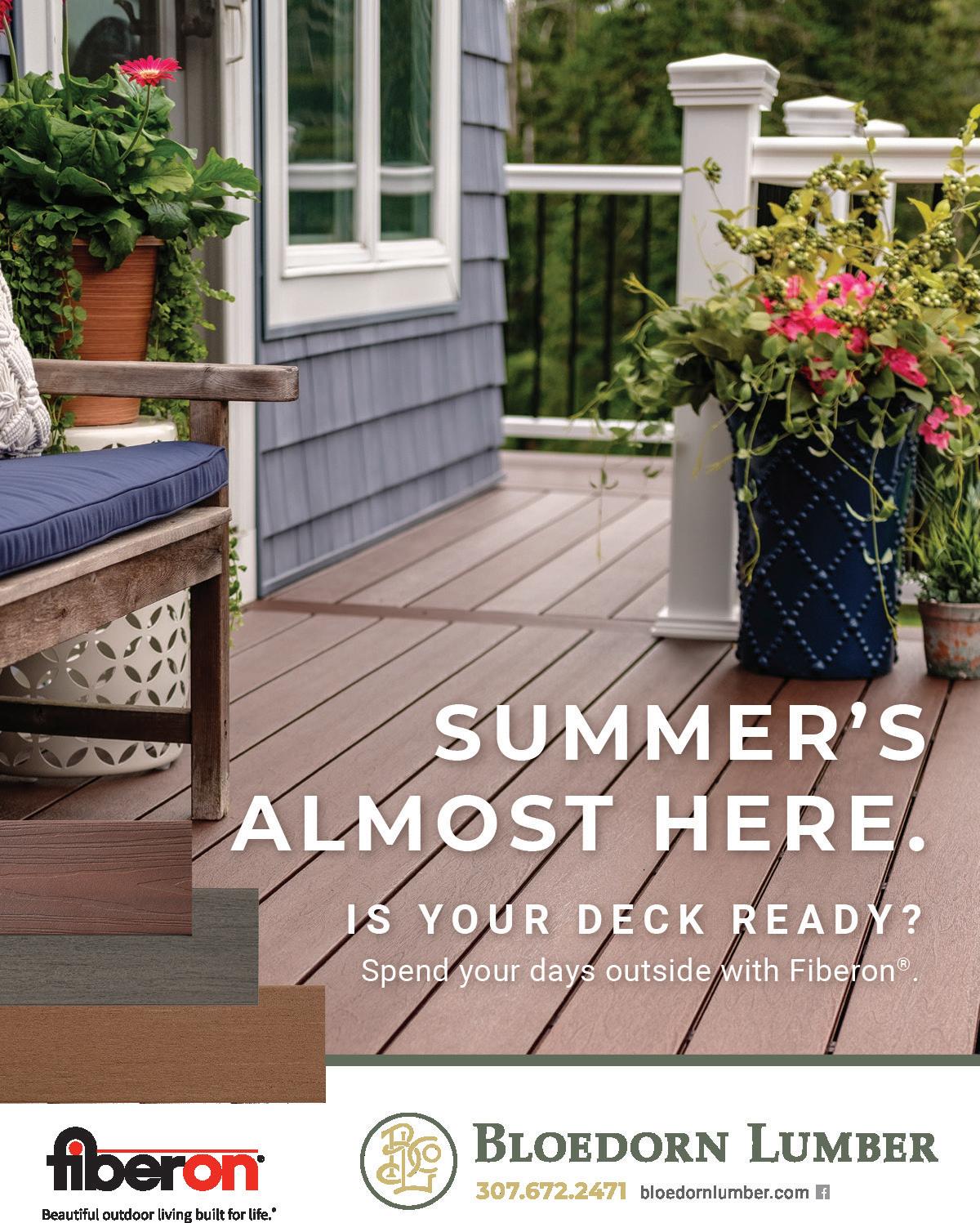
Over the last few years, families have become especially familiar with what works about their yards and where there is room for improvement. Pandemic-related travel restrictions and early stay-at-home mandates resulted in plenty of time spent in backyards on staycations. Even though many such restrictions have been lifted, homeowners may have seen the benefits of having functional respites right outside their doors.
A backyard renovation can cost anywhere from $5,000 to $50,000. The American Society of Landscape Architects suggests homeowners budget the cost of a major landscaping project at between 5 and 10 percent of their home’s value. Large or small, here are ways to make an outdoor oasis at home.
Create Privacy with Fencing and Plants
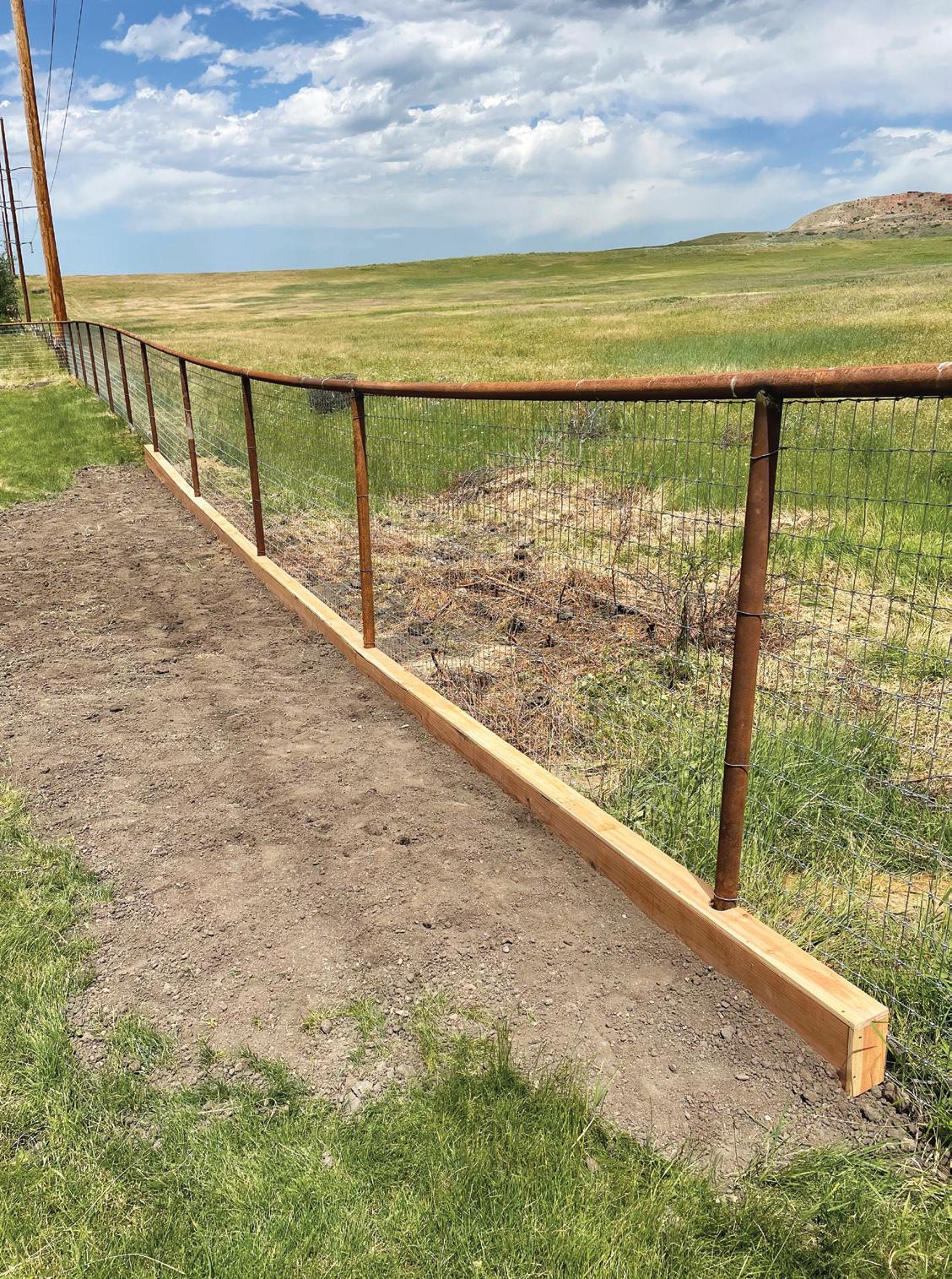

Living in close proximity to neighbors may make privacy harder to come by. Wood or vinyl fences are perfect for privacy. Vertical gardening, which trains easy-care vines like English ivy, Clematis or various climbing roses to grow on trellis or fencing adds greenery and privacy. Hedges and fast-growing shrubs also can be used for natural barriers.
Install a pool
Pools are the ultimate spots to cool off on hot days. An elaborately shaped inground pool can blend in with the landscape and offer the ultimate hang-out zone. However, above-ground pools also serve the purpose and are more budget-friendly. Stock tank pools are popular among those who want minimal pool expenditure or have small spaces to work with. Stock tanks are metal vessels traditionally used as watering holes for livestock. They also can be “adult kiddie pools” when combined with some plumbing. Galvanized steel frames make them sturdy. With floats and other accessories, they can become the perfect oasis.
Provide outdoor atmosphere
Create a bespoke bistro vibe by using freestanding planters and posts along with
hanging lights to make an intimate outdoor hangout spot at night. For those with permanent structures, like a deck or a gazebo, lights can be strung across the area or on railings or edging.
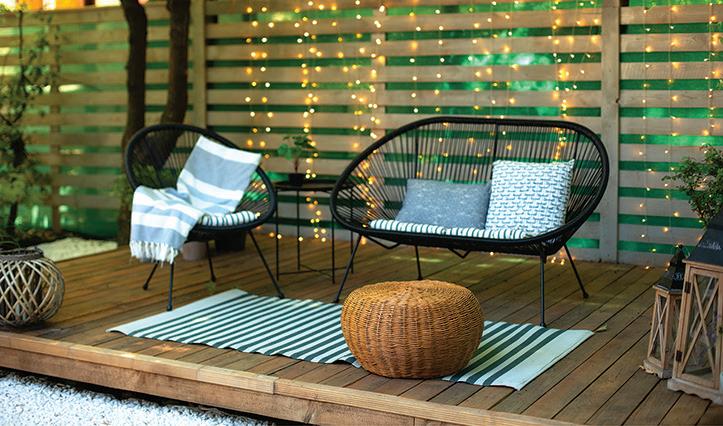
Extend the living space
Decks and patios can help make outdoor entertaining areas more comfortable by eliminating the need to sit on the grass or gravel. Plus, they add another “room” to the home. When paired with weatherproof patio furniture, such as sofas, loungers and tables, a private seating area can be crafted and utilized for any number of entertaining desires.
Hang a hammock
Few things evoke feelings of relaxation better than a hammock. Fitted between two trees (or two posts if trees are sparse), a hammock is an ideal place to grab a nap or read a book.
Additional oasis-inspired ideas include outdoor kitchens, letting up lanterns, cascading water features, and bird feeders to attract the sounds of nature.
Landmark Living on Linden
Unique Apartments Priceless Memories
P.O.
Box 592
Story, WY 82842
The many benefits of houseplants
carbon dioxide. Plants do the opposite during photosynthesis. They absorb carbon dioxide and then release oxygen. Plants can put much more oxygen into the air, improving indoor conditions.
Increase indoor humidity and reduce illness
Studies from the Agricultural University of Norway found that indoor plants can increase humidity in indoor spaces, which decreases the incidences of sore throats, dry coughs, dry skin, and the common cold. Higher absolute humidity can decrease the chances of survival and transmission of the flu virus. Filter the air
Researchers who presented their work at the 252nd National Meeting & Exposition of the American Chemical Society found certain houseplants can combat the potentially harmful effects of volatile organic compounds. Plants may help filter out VOCs like benzene, acetone and formaldehyde, which can enter indoor air via cleaning supplies, dry-cleaned clothes, furniture, printers, and paints.
The lines between the outdoors and indoors are being blurred. Homeowners build extensive outdoor living spaces so they can relax on weather-resistant furniture and even cook in lavish kitchens in their backyards. In addition, indoor three-season rooms full of bright, open windows that showcase outdoor vistas challenge the boundaries between outside and inside. For those working with limited budgets, there are some easy, inexpensive ways to enjoy the majesty of natural landscapes indoors. Houseplants can be used to improve indoor space, and they also provide various health benefits.
Help with allergies
According to WebMD, rooms with houseplants tend to have less dust and mold in them than those without any foliage. Leaves and other parts of the plants serve as natural filters, catching airborne particles and allergens. Plants with textured leaves might be especially effective at trapping particles.
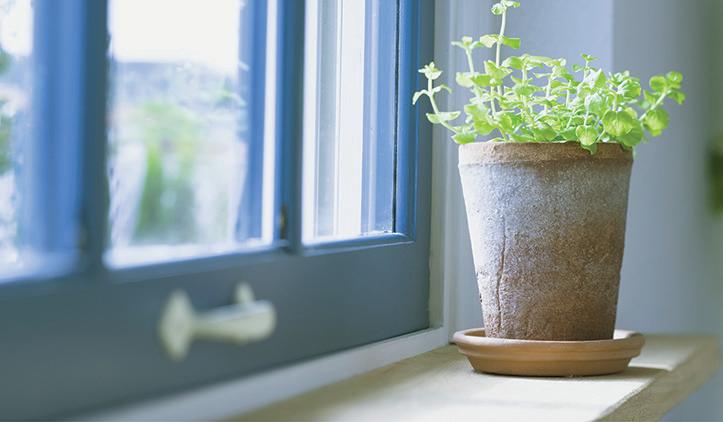
Put more oxygen into the air
The human respiratory system works by bringing in oxygen and releasing
Improve interior atmosphere
Prevention magazine says plants can be used to screen unattractive areas, moderate room temperature by shading spots from the sun and even reduce noise. Plants also can improve ambiance and create a pleasing atmosphere in a room.
Can improve mood
Growing and caring for plants can alleviate everyday stress. A nationwide study from UK Magazine Gardeners World found 80 percent of gardeners declared themselves satisfied with life compared to 67 percent among non-gardeners. Gardeners were more positive mentally. Greenery can help people feel more at home and improve mental health. A rehab center in Norway found patients reported a greater increase in well-being four weeks after having greenery added to their surroundings.
Houseplants can improve indoor areas and positively affect personal health.
Proceeds to benefit and built by the Sheridan College Construction Technology & Apprenticeship Students
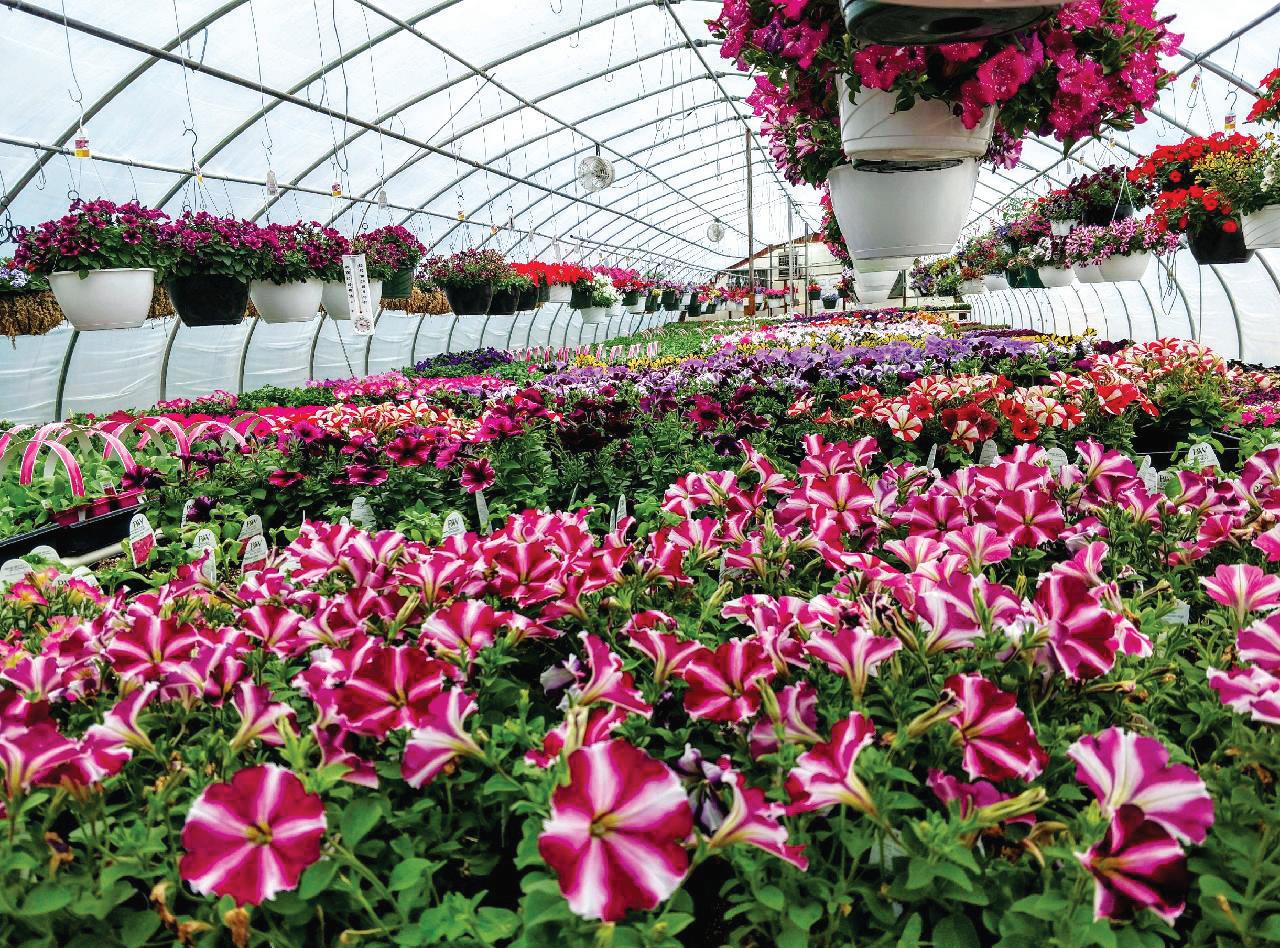



Construction materials generously donated by

Backyard living with natural gas
Whether you are hosting a neighborhood gathering or enjoying an evening with family, you can do it in style with convenient and reliable natural gas products.
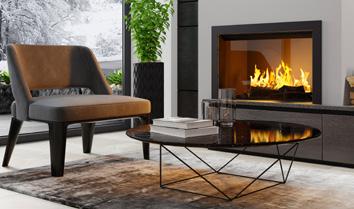
Don’t worry about your propane tank running empty and avoid messy charcoal with a natural gas grill.

When the sun goes down, extend the fun by warming your outdoor space with a natural gas patio heater, fireplace or fire pit.
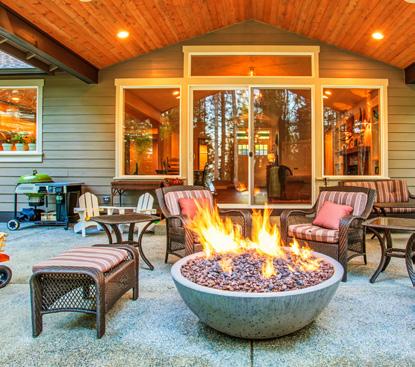
Natural gas is the right choice for your backyard entertaining.
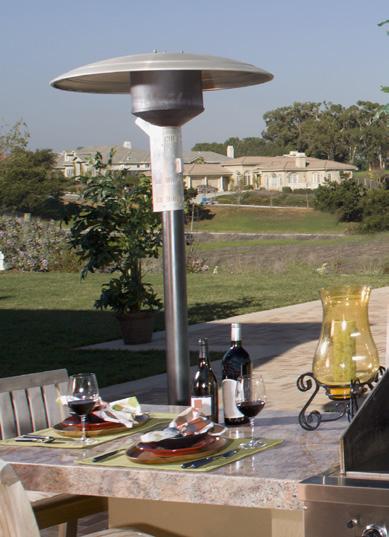
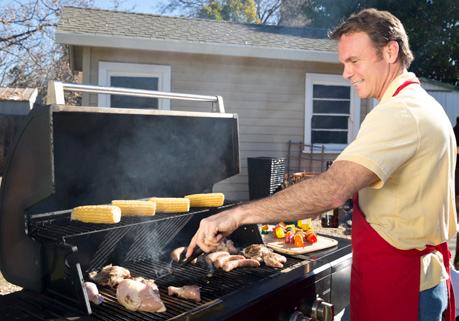
Did you know?
When planning spring landscapes, homeowners should always group plants with similar water needs together. According to the U.S. Department of Energy, grouping plants with similar water needs together helps to conserve water, which can be an especially useful strategy if or when drought restrictions go into effect in summer. Homeowners also can embrace additional strategies to landscape with water conservation in mind. For example, aerating soil helps to improve water flow to plants’ roots and reduces water runoff, helping to ensure that plants get all of the water they need while reducing the likelihood that homeowners will have to use excessive amounts of water to keep plants healthy. In addition, using low-water-using types of grass can help homeowners who live in areas prone to drought conserve water while still maintaining lush, green lawns.
1-800-638-3278 • www.montana-dakota.com


Natural gas is the right choice
Many lawns contain a mixture of the roughly one dozen types of different grasses. According to the lawn care experts at Scotts®, knowing which type of grass they have in their yard can help homeowners more effectively manage and care for their lawns. But with so many lawns containing a mixture of grasses, how can homeowners know exactly what’s making up that green carpet in their yards? Scotts® notes that lawns typically fall into one of two categories: warm-season grasses and cool-season grasses. Warm-season grasses are those that thrive in regions where the climate tends to be especially warm, such as the southern United States. Cool-season grasses are those that are at their best in climates that experience extreme temperature fluctuations. For example, cool-season grasses are most likely to be found in the northern United States, as much of this area of the country experiences cold winters and warm, and in some places very hot, summers. Homeowners who are uncertain about which type of grass they have can consult a lawn care professional for advice. Homeowners who learn which type of grass is in their yard can use that information to determine how frequently they should mow and water their lawns and which type of fertilizer is best-suited to their lawns.
Container gardening tips
Gardening is beneficial in various ways. The AARP states that some of the health perks associated with gardening include improved mood, increased vitamin D levels (which benefits bones and immune system) and reduced risk of dementia.
In addition, if gardening efforts include growing herbs, fruits and vegetables, it can be a cost-effective way to eat healthy.
For gardeners without sufficient space or for those with mobility issues, container gardening can be an ideal way to grow everything from flowers to vegetables. Better

Homes & Gardens says most plants are not fussy about the containers in which they grow so long as some of their basic needs are met. This means watering correctly for the type of plant, and ensuring sufficient drainage. The following are some other ways container gardening efforts can prove successful.
• Watch water. Planet Natural Research Center says plants with thin leaves typically need ample water, and plants with thick leaves need less. Use this as a guideline to gauge water needs.
• Size correctly. Plants should be sized to the container. Consider dwarf varieties of certain plants if your containers are small.
• Choose the right soil. Fill containers with a commercial potting soil rather than soil from the garden. Garden soil can dry into a solid mass, while commercial mixtures have amendments like peat moss, vermiculite, compost, and other ingredients to help with soil texture and moisture retention.
• Mix it up. When planting containers of flowers and other greenery, Good Housekeeping says to include “a thriller, a spiller and a filler” as a good rule of thumb. The thriller is the focal point, the spiller a trailing plant, and a filler has smaller leaves or flowers to add bulk and color.
• Poke holes. Drainage holes are essential so that soil will not become waterlogged. Holes don’t need to be large, but there should be enough of them so that excess water can drain out readily.
• Select the right container material. Container materials may be affected by gardeners’ budgets, personal taste and other factors. For those who live in hot climates, selecting a light-colored container can help prevent further soil heat absorption.
Container gardening is a healthy and enjoyable activity that can pay dividends in various ways and can be a cost-effective way to eat healthy. For gardeners without sufficient space or for those with mobility issues, container gardening can be an ideal way to grow everything from flowers to vegetables.



